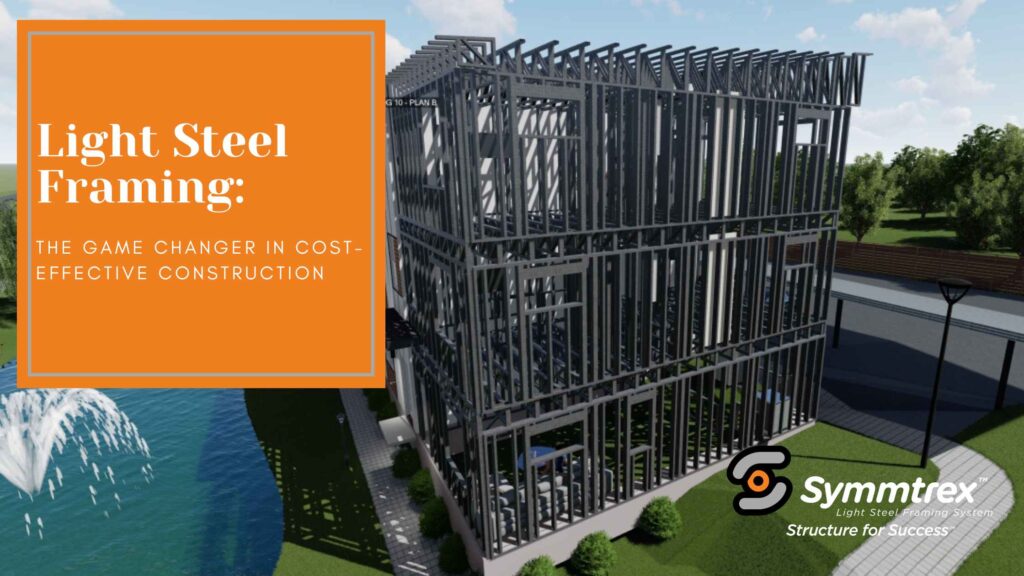In the quest for more cost-effective construction methods, the industry has seen a significant shift towards innovative solutions that promise not only to reduce costs but also to improve efficiency and sustainability. Among these, light steel framing stands out as a pivotal innovation, revolutionizing how buildings are constructed. This blog post explores how light steel framing is changing the game in cost-effective construction.

What is Light Steel Framing?
Light steel framing is a construction technique that utilizes cold-formed steel as the primary structural component. Known for its strength, durability, and flexibility, light steel framing has become a popular choice for both residential and commercial construction projects. Its adaptability and efficiency in construction processes make it an ideal solution for those seeking cost-effective building methods.
The Cost-Saving Benefits of Light Steel Framing
Speed of Construction
One of the most compelling advantages of light steel framing is the significant reduction in construction time. Components can be prefabricated in a factory setting, allowing for a quicker assembly on-site. This rapid construction process not only reduces labor costs but also minimizes the risk of delays due to weather or other external factors, further contributing to the overall cost-effectiveness of a project.
Reduced Material Waste
The precision of prefabrication with light steel framing leads to a dramatic decrease in material waste. Unlike traditional construction methods, which often result in significant offcuts and discarded materials, light steel framing utilizes materials more efficiently. This not only contributes to the cost effectiveness of projects but also aligns with sustainable construction practices by reducing the environmental impact.
Durability and Maintenance
The inherent strength and durability of steel ensure that structures built with light steel framing are resistant to common issues such as rot, pests, and fire. This resilience translates into lower maintenance and repair costs over the lifespan of the building. Additionally, steel’s ability to withstand severe weather conditions reduces the likelihood of damage and associated repair costs, further enhancing its cost-effectiveness.
Enhancing Energy Efficiency
Improved Insulation
Buildings constructed with light steel framing can be designed to achieve superior insulation. The steel structure allows for comprehensive insulation to be fitted within the walls and roofs, leading to enhanced energy efficiency. This not only provides environmental benefits by reducing energy consumption but also results in significant savings on heating and cooling costs for occupants.
Long-term Savings
The initial investment in light steel framing might be higher compared to traditional construction methods, but the long-term savings are substantial. Reduced energy bills, lower maintenance costs, and the longevity of steel structures all contribute to the overall cost-effectiveness of light steel framing. These savings make it an increasingly attractive option for developers and investors looking for sustainable and cost-efficient construction solutions.
Flexibility and Adaptability
Design Freedom
Light steel framing offers unparalleled flexibility in design, allowing architects and designers to create innovative and complex structures without the constraints of traditional building materials. This design flexibility can lead to more efficient use of space and materials, further driving down construction costs.
Future Modifications
The adaptability of light steel framing also extends to future modifications. Structures can be easily altered or expanded, providing a cost-effective solution to changing needs or requirements. This ability to adapt without significant additional investment ensures that buildings can evolve over time, adding to their value and functionality.
Conclusion: A Bright Future for Cost-Effective Construction
Light steel framing is undeniably a game changer in the world of cost-effective construction. Its benefits extend far beyond the immediate savings in construction costs, offering long-term financial advantages, environmental sustainability, and design flexibility. As the construction industry continues to seek innovative ways to build more efficiently and affordably, light steel framing stands out as a leading solution. By embracing this technology, we can look forward to a future where cost-effective construction also means high quality, sustainable, and adaptable buildings.

